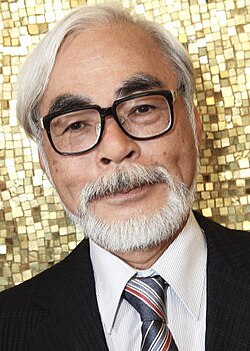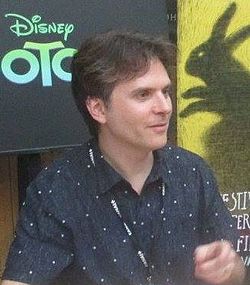| Academy Award for Best Animated Feature | |
|---|---|
2025 co-recipients | |
| Awarded for | The best animated film with a running time of more than 40 minutes, a significant number of the major characters animated, and at least 75 percent of the picture's running time including animation. |
| Country | United States |
| Presented by | Academy of Motion Picture Arts and Sciences (AMPAS) |
| First award | Shrek (2001) |
| Most recent winner | Flow (2024) |
| Most awards | Pixar (11) / Pete Docter (3) |
| Most nominations | Pixar (19) / Pete Docter, Hayao Miyazaki, and Chris Sanders (4) |
| Website | oscars |
The Academy Award for Best Animated Feature is an Academy Award presented annually by the Academy of Motion Picture Arts and Sciences (AMPAS) for the best animated feature film. An animated feature is defined by the academy as a film with a running time of more than 40 minutes in which characters' performances are created using a frame-by-frame technique, a significant number of the major characters are animated, and animation figures in no less than 75 percent of the running time. [1] The Academy Award for Best Animated Feature was first awarded in 2002 for films released in 2001. [2] [3] [4]
Contents
- Winners and nominees
- 2000s
- 2010s
- 2020s
- Multiple wins and nominations
- Nominees
- Studios
- Franchises
- Superlatives
- Age
- Length
- International films
- Japanese nominees
- French nominees
- Other languages
- Non-dialogue or fictional languages
- Milestones and records
- Films and production companies
- People
- Legacy
- Criticisms and controversies
- Best Picture criticism
- Category bias
- See also
- References
- Bibliography
- External links
For much of the Academy Awards' history, AMPAS was resistant to the idea of a regular award for animated features, considering there were simply too few produced to justify such consideration. [5] Instead, the Academy occasionally bestowed special Oscars for exceptional productions, usually for Walt Disney Pictures, such as Academy Honorary Award for Snow White and the Seven Dwarfs in 1938, [6] and the Special Achievement Academy Award for the live action/animated hybrid Who Framed Roger Rabbit in 1989 [7] and Toy Story in 1996. [8] In fact, prior to the award's creation, only one animated film was nominated for Best Picture: 1991's Beauty and the Beast , also by Disney. [9] [10]
By 2001, the rise of sustained competitors to Disney in the feature animated film market, such as DreamWorks Animation (founded by former Disney executive Jeffrey Katzenberg), created an increase of film releases of significant annual number enough for AMPAS to reconsider. [5] The Academy Award for Best Animated Feature was first given out at the 74th Academy Awards, [11] held on March 24, 2002. [12]






















